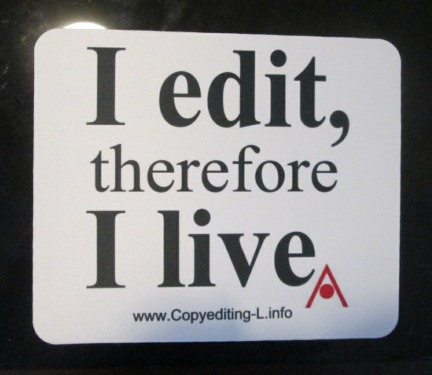Over the years of working with English as an editor and writer I’ve learned to be careful of the words “right” and “wrong.” When asked if something is right or not, I often begin with “It depends” — on your intended audience, on context, on which side of “the pond” (aka the Atlantic Ocean) you’re on, and so on.
We talk about the “rules of grammar” as if they’re hard, fast, and uncompromising, but they aren’t. Even the basic ones have their exceptions. Take “subject-verb agreement.” The subject should always agree with its verb in number, right? Most of the time, yes, but some nouns can be singular or plural depending on how they’re being used. Some examples: couple and family take a singular verb when referring to the unit, but a plural verb when its members are being emphasized.
The same principle applies to majority and many other words denoting groups of persons, places, or things: is it referring to the group as a whole or to its constituent parts? (Tip: Is it preceded by the definite article the or the indefinite a(n)?
- The majority has voted to replace the bridge.
- A majority (of participants or whatever) are coming to the party.
Which brings me around to style. Style is far more flexible than grammar, and for this very reason publications, publishers, and academic disciplines adopt distinctive styles. These are often based on one of the major style guides. Most U.S. publishers use the Chicago Manual of Style, often with their own additions and exceptions. Most U.S. newspapers and periodicals start with the AP Stylebook. (AP stands for Associated Press, a nonprofit news agency that dates back to the mid-19th century.) Other common styles include MLA (Modern Language Association), which is especially popular in the humanities, and APA (American Psychological Association), widely used in the social sciences.
I’m on a first-name basis with Chicago, having been using it since 1979, and I have a nodding acquaintance with AP. A significant difference between the two is in how they handle numbers. Chicago generally spells out numbers through one hundred. AP spells out one through nine but uses figures for 10 and up. Another is in the use of italics: Chicago employs them in a variety of ways, notably for titles of books, films, and other full-length works. AP style doesn’t use them at all. Before the digital age, italics couldn’t be transmitted “over the wires,” so AP style developed without them (and without boldface, for the same reason).
Unsurprisingly, Chicago, MLA, and APA styles devote a lot of attention to citations. All three are widely used by academics, whose writing is based on previously published work or unpublished work that can be found in manuscript collections. (Chicago began as the style guide of the University of Chicago Press. Though it’s widely used by trade publishers and even fiction writers, its scholarly origins are obvious in the chapters devoted to quotations and citation style.)
It’s no surprise either that AP devotes virtually no attention to footnotes, endnotes, and bibliographies. Reporters may quote from public documents, but their primary sources are interviews and public statements. They may have recorded backup, or they may rely on notes scribbled the old way in a notebook.
So what does this mean to you? The top two lessons I’ve learned over the years as a writer and editor are (1) right and wrong, correct and incorrect, are shiftier than one learns in school, and (2) nevertheless, rules and conventions are important. The better you know them, the more command you’ll have over your writing — which is a big plus when you decide to stretch, bend, or break them.
For U.S. writers of general nonfiction, creative nonfiction (e.g., memoir), and fiction, the Chicago Manual of Style is a good place to start. No, you don’t need to read it straight through. (I never have, and there are a couple of chapters that I’ve rarely ever looked at.) The further you get from scholarly nonfiction, the more flexible you should be about applying its recommendations. As I keep saying, these are guidelines, not godlines.
When I’m working, I usually have three dictionaries — Merriam-Webster’s, American Heritage, and Oxford/UK — open in my browser, along with the Chicago Manual of Style. I subscribe to the AP Stylebook and consult it from time to time. This reminds me continually that even “the authorities” differ. For colloquialisms and current slang, Google is only a click away.
I just realized that I haven’t said a thing about style sheets. Fortunately I wrote about them at some length a few years ago: “What’s a Style Sheet?” Short version: A style sheet is for keeping track of all the style choices one makes when copyediting a manuscript. It includes general choices about the styling of, e.g., numbers and the use of quote marks and italics. It also includes words, dozens of words: unusual words, words that aren’t in the dictionary, words for which there is more than one spelling. In biographies and history books, the list of personal names might be as long as the word list. When I turn in the completed copyediting job, my style sheet goes with it. When I receive a proofreading job, I get the copyeditor’s style sheet too.
For writers, keeping a style sheet is a handy way to maintain consistency, especially in a novel or other book-length work. It can also remind you to check the spelling of names and places. Publishers don’t encourage authors to submit style sheets with their manuscripts, but I wish they did.







